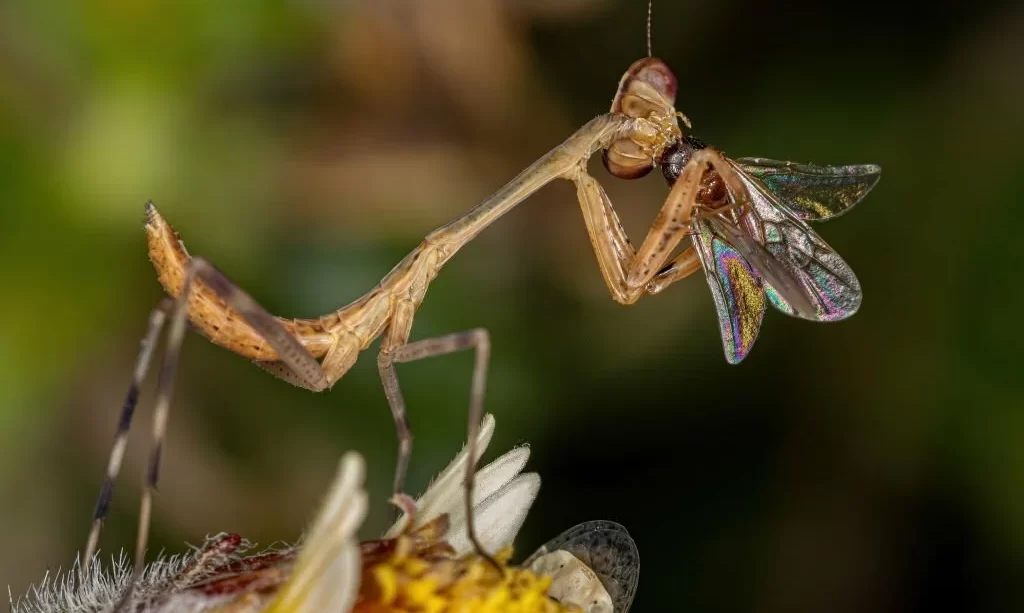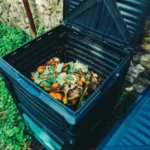In the world of entomology, the delicate and formidable praying mantis stands as one of the most captivating predators, known for its stealthy hunting technique and enigmatic demeanor. Their presence in gardens, meadows, and forests sparks both curiosity and awe, as they are celebrated for their role in controlling insect populations. At the same time, ants, those industrious and diverse insects, scuttle through almost every terrestrial ecosystem, playing vital roles as scavengers, pollinators, and social organisms. The question that often arises is, “Do praying mantises eat ants?”.
In this article, we embark on a journey to unravel the mysteries surrounding the dietary habits of praying mantises and their potential interactions with ants. Praying mantises are known for their efficient hunting methods, while ants encompass a vast array of species with diverse behaviors. As both mantises and ants inhabit a wide range of habitats and ecosystems, understanding their roles in nature and the dynamics of their interactions contributes to a deeper appreciation of the intricate web of life.
Praying Mantis Predatory Behavior
Praying mantises, those masterful and cryptic insect hunters, have long captivated the fascination of naturalists and enthusiasts. These iconic insects are celebrated for their exceptional predatory behavior, which has earned them a reputation as stealthy and ruthless hunters.
Praying mantises are carnivorous insects, known for their ambush hunting technique. They patiently await their prey, often remaining motionless and camouflaged amidst vegetation. When an unsuspecting insect approaches, the mantis strikes with astonishing speed, capturing its prey with its raptorial forelimbs, often referred to as “mantid arms.” The mantis then devours its quarry, demonstrating their efficiency as carnivorous predators.
Ants: A Common and Varied Insect Group
Ants, those highly social and industrious insects, are among the most common and varied of all insect species. Their presence is ubiquitous, spanning ecosystems from tropical rainforests to urban environments. The world of ants encompasses an impressive diversity of species, each with its unique traits, behaviors, and roles in ecosystems.
These resilient insects are known for their intricate societies, with divisions of labor, communication through pheromones, and organized foraging patterns. Ants are versatile in their dietary preferences, with some species being omnivorous, feeding on a combination of insects, nectar, and plant matter, while others may be more specialized in their feeding habits.
Understanding the world of ants and their vital contributions to ecosystems is essential to appreciate the complex relationship between these industrious insects and the enigmatic hunters, the praying mantises. The interactions and potential dietary connections between these two groups offer a compelling glimpse into the intricacies of the natural world.
Do Praying Mantises Eat Ants?
The question of whether praying mantises consume ants is a point of curiosity among those who observe these insects in their natural habitats. Praying mantises are opportunistic predators, and their diets primarily consist of a wide variety of other insects, including flies, moths, grasshoppers, and even other mantises. However, the likelihood of mantises preying on ants can vary based on several factors.
Size plays a crucial role in determining whether a praying mantis would actively hunt ants. Praying mantises are equipped with powerful raptorial forelimbs that are designed for capturing prey of a certain size. Most ants are relatively small, which may make them less attractive targets for mantises. In some cases, smaller mantis species or nymphs may be more inclined to feed on ants, especially if ants are abundant and easily accessible.
Observations of mantises consuming ants are not uncommon, and there is anecdotal evidence to suggest that some mantises may opportunistically feed on ants when other prey is scarce. However, the general consensus is that ants are not a staple food source for praying mantises. Mantises are more likely to focus their predatory efforts on larger, more substantial insects.
Praying Mantises and Ants in Natural Ecosystems
The presence of both praying mantises and ants in natural ecosystems underscores their ecological significance. Praying mantises contribute to the regulation of insect populations, helping to control the numbers of potential pests in gardens, meadows, and woodlands. By targeting a variety of insects, they play a role in maintaining ecological balance.
Ants, on the other hand, are highly social insects that form complex colonies with specialized roles, such as foragers, workers, and queens. They are essential in nutrient cycling and seed dispersal, and some ant species protect plants by preying on herbivorous insects.
While praying mantises and ants may occasionally cross paths in the wild, their interactions are typically limited. Ants, being social insects, are known for their collective defensive behaviors, which include swarming and stinging to deter potential threats. These behaviors can make ants less appealing prey for solitary mantises. In essence, ants and mantises often inhabit different niches within ecosystems, with mantises hunting other insects and ants focusing on their complex social lives and foraging activities.
Understanding the ecological roles of both praying mantises and ants allows us to appreciate their importance in maintaining the balance of natural ecosystems. While their interactions may be relatively limited, they contribute to the intricate tapestry of life in diverse habitats, each playing a unique part in the delicate web of predator-prey relationships.
Praying Mantises in Gardens and Pest Control
Praying mantises, with their exceptional predatory behavior, often find themselves celebrated as valuable allies in gardens and natural pest control. Their presence in gardens can be a boon to gardeners and horticulturists seeking eco-friendly solutions to pest problems.
Praying mantises are voracious hunters and are particularly effective at controlling a wide range of insect pests. They target garden intruders such as aphids, caterpillars, beetles, and flies, helping to keep pest populations in check. Gardeners who welcome mantises into their outdoor spaces can enjoy the benefits of natural pest control, reducing the need for chemical insecticides and fostering a healthier and more sustainable garden ecosystem.
As garden protectors, mantises contribute to the balance of local ecosystems while supporting the cultivation of beautiful and bountiful gardens. While their predation on ants may be sporadic, their overall presence is a testament to the interconnected web of life in natural settings.
Conclusion
In the exploration of whether praying mantises eat ants, we unveil the multifaceted interactions of these enigmatic insects within the complex ecosystems they inhabit. While praying mantises are primarily renowned for their predation on a variety of insects, their consumption of ants tends to be less common due to size and dietary preferences.
Praying mantises play vital roles in gardens, meadows, and natural ecosystems, acting as natural pest controllers and maintaining ecological balance by controlling insect populations. Their hunting prowess and iconic appearance make them beloved creatures among those who appreciate the intricate dance of life in the wild.
Ants, with their diverse species and complex social structures, fulfill essential roles in nutrient cycling and other ecological processes. While their interactions with mantises are typically limited, they contribute to the delicate tapestry of life, emphasizing the significance of every creature in the grand scheme of things.
In conclusion, the question of whether praying mantises eat ants highlights the interplay of predator and prey, each with a specific role in maintaining the equilibrium of natural ecosystems. The world of insects, including these remarkable hunters and diligent workers, invites us to marvel at the intricate relationships and the diversity of life that fills the natural world around us.




